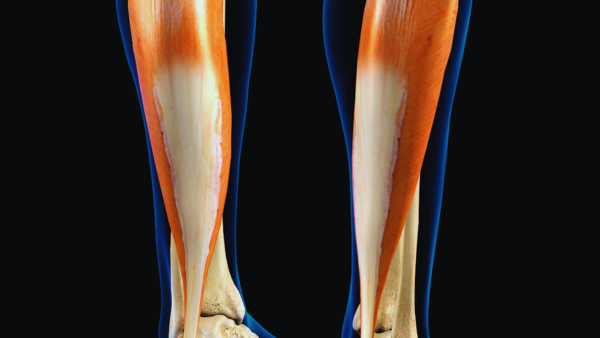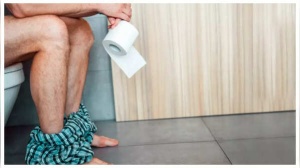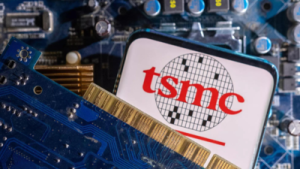Imagine lowering your blood sugar levels by up to 52% with a simple seated exercise. Recent health research suggests that performing calf raises while sitting can have a significant impact on blood glucose regulation. This low-effort activity involves rhythmically lifting your heels while keeping the balls of your feet on the floor, engaging your calf muscles even while seated. Health experts emphasize that these movements activate the soleus muscle, which plays a crucial role in regulating blood sugar in the body.
What makes this technique particularly appealing is its accessibility. It requires minimal effort, no specialized equipment, and can be performed without even standing up. This makes it a beneficial exercise for individuals with limited mobility or those who lead sedentary lifestyles.
For individuals with consistently elevated blood sugar levels or those in prediabetic stages, incorporating these movements during extended periods of sitting – whether while watching television, working at a desk, or even traveling in a car – could result in significant improvements over time.

According to a peer-reviewed study published in the National Library of Medicine, the soleus pushup, a simple seated calf raise, can significantly boost local oxidative metabolism and enhance blood sugar control. Unlike most muscles that tire quickly, the soleus is metabolically designed to function efficiently for extended periods without fatigue. The study demonstrated that this movement increases glucose uptake without relying on glycogen stores, making it an effective strategy for managing postprandial blood sugar spikes.

Many people underestimate the power of the soleus muscle, often overshadowed by larger leg muscles like the quadriceps. However, a recent peer-reviewed study published in iScience and hosted by the National Institutes of Health (NIH) describes the soleus as a metabolic powerhouse. Unlike other muscles, the soleus can sustain low-intensity contractions for long durations without fatigue and supports glucose and lipid regulation for extended periods.
The study introduced the term "soleus pushup" (SPU) to describe this seated movement and demonstrated that it boosts oxidative metabolism even more than standing or walking. Researchers observed an average reduction in blood glucose by 52% and a 60% reduction in insulin levels when the SPU was performed during prolonged sedentary periods.
No special equipment, standing, or gym routines are necessary. Simply perform soleus pushups while seated, slowly lifting your heels up and down, to improve blood glucose and fat metabolism throughout the day. Researchers have emphasized the benefits of this exercise, even during prolonged periods of sitting, such as while working in an office or watching television.
For individuals with prediabetes, Type 2 diabetes, or sedentary lifestyles, this simple movement can be a low-effort, high-impact addition to their daily routines. Study participants demonstrated glucose reductions of up to 52% in some cases when consistently using the soleus pushup method.
While this is not a replacement for healthy eating habits, medication, or regular physical activity, experts suggest that soleus activation can complement existing glucose control strategies. Consider it a biological trick that works silently while you sit.
Newer articles
Older articles
 India Enters New Space Age as Astronaut Shukla Joins ISS Mission
India Enters New Space Age as Astronaut Shukla Joins ISS Mission
 X Cracks Down: Half a Million Indian Accounts Suspended for Policy Breaches
X Cracks Down: Half a Million Indian Accounts Suspended for Policy Breaches
 Google Unveils Strategy to Combat Misinformation, Boost Voter Access in India's 2024 Elections
Google Unveils Strategy to Combat Misinformation, Boost Voter Access in India's 2024 Elections
 Hair Oil vs. Hair Serum: Which is the Right Choice for Your Hair?
Alternatively:
Unlock Your Best Hair: Choosing Between Hair Oil and Serum for a Healthy Mane
Hair Oil vs. Hair Serum: Which is the Right Choice for Your Hair?
Alternatively:
Unlock Your Best Hair: Choosing Between Hair Oil and Serum for a Healthy Mane
 Bollywood's 'Swades' Anthem Joins Axiom-4 Mission: Indian Astronaut's Playlist Honors Heritage in Space
Bollywood's 'Swades' Anthem Joins Axiom-4 Mission: Indian Astronaut's Playlist Honors Heritage in Space
 Vijay Sethupathi Apologizes Amid Controversy Over Son's Film 'Phoenix'
Vijay Sethupathi Apologizes Amid Controversy Over Son's Film 'Phoenix'
 New York Assemblyman Zohran Mamdani's Style: 5 Lessons in Authenticity and Heritage
New York Assemblyman Zohran Mamdani's Style: 5 Lessons in Authenticity and Heritage
 Colon Cancer: Don't Ignore These 5 Early Warning Signs
Colon Cancer: Don't Ignore These 5 Early Warning Signs
 TSMC Regains Top 10 Global Value Ranking Amid AI Boom
TSMC Regains Top 10 Global Value Ranking Amid AI Boom
 Android Users Urged to Update Devices Amid High-Severity Security Flaws: Government Issues Warning
Android Users Urged to Update Devices Amid High-Severity Security Flaws: Government Issues Warning